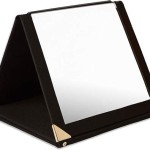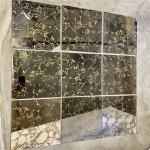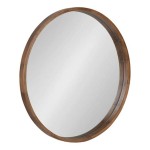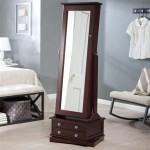Is a Convex Mirror Upright or Inverted?
Convex mirrors are known for their distinctive outward curvature, resembling a portion of a sphere bulging outwards. This unique shape gives rise to specific image characteristics that differentiate convex mirrors from their concave counterparts. One common question regarding convex mirrors is whether they produce upright or inverted images.
Image Orientation in Convex Mirrors
Convex mirrors always produce upright images. Regardless of the object's position relative to the mirror, the image formed will be oriented in the same direction as the object. This characteristic stems from the way light rays interact with the curved surface of the mirror, diverging outwards upon reflection.
Understanding Image Formation in Convex Mirrors
To grasp the upright nature of images in convex mirrors, consider how light rays behave upon striking the reflective surface. When parallel rays approach the mirror, they reflect outwards, diverging away from one another. If these diverging rays are extended backward, they appear to originate from a single point behind the mirror. This point is where the virtual image forms.
Virtual Images and Convex Mirrors
The images formed by convex mirrors are always virtual. A virtual image cannot be projected onto a screen, unlike a real image. This is because the light rays do not actually converge at the image location; rather, they appear to diverge from that point. The image observed in a convex mirror is a product of the brain's interpretation of these diverging rays.
Diminished Images in Convex Mirrors
Another characteristic feature of images formed by convex mirrors is their diminished size. The images are always smaller than the actual object being reflected. This reduction in size is a direct consequence of the diverging nature of the reflected rays. As the rays spread outwards, the image appears smaller and further away than the object.
Wide Field of View: A Key Advantage of Convex Mirrors
The diverging reflection pattern of convex mirrors allows them to cover a wider field of view compared to plane mirrors or concave mirrors focusing real images. This widened perspective makes convex mirrors valuable in various applications where a broad visual range is crucial. For example, they are commonly used as security mirrors in shops, rearview mirrors in vehicles, and at blind corners on roads.
Applications of Convex Mirrors: Utilizing the Upright, Diminished Image
The combination of upright and diminished images makes convex mirrors suitable for specific purposes. The upright orientation ensures that the image is correctly perceived, while the diminished size allows a larger area to be viewed. This is particularly beneficial in security scenarios where a wider field of view is necessary for monitoring a larger area. In vehicles, the diminished image provided by the convex rearview mirror helps drivers see more of the traffic behind them, although it also makes judging the distance of following vehicles more challenging.
Comparing Convex Mirrors to Concave Mirrors
Concave mirrors, in contrast to convex mirrors, have an inward curvature. They can produce both real and virtual images, depending on the object's placement relative to the mirror. Concave mirrors can also produce magnified images, a characteristic not found in convex mirrors. While concave mirrors are utilized in applications requiring magnification, such as telescopes, convex mirrors excel in situations needing a wider field of view and smaller, upright images.
The Role of Focal Length in Convex Mirrors
The focal length of a convex mirror is always negative. This negative value reflects the diverging nature of the reflected rays and the formation of virtual images behind the mirror. The focal length is a crucial parameter in determining the image's size and location using mirror equations. Understanding the negative focal length is essential for accurately analyzing image formation in convex mirrors.
The Divergence of Light: The Foundation of Convex Mirror Properties
The fundamental principle underlying the unique image characteristics of convex mirrors is the divergence of reflected light. This divergence leads to the formation of upright, virtual, and diminished images. Understanding this core principle is essential for comprehending the function and applications of convex mirrors in various contexts, from everyday objects to specialized optical instruments.
Does The Convex Lens Have An Upright Or Upside Down Image Quora
Real Image Versus Virtual Convex Mirror
Question Recalling Whether The Image Produced By A Convex Mirror Can Be Inverted Nagwa
Is It Right A Convex Mirror Always Forms An Inverted Image Quora
Can Convex Mirrors Ever Produce Real Images Inverted Magnified Quora
Pin By Kelly Palacio On Fisica Physics Mathematics Math
Convex Mirror Definition Equation Examples Lesson Study Com
Can A Convex Mirror Form Magnified Image Quora
Objects In The Mirror Are Actually Images Article Khan Academy
Can Convex Mirrors Produce Lateral Inversion Quora








